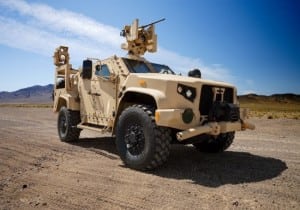
Army Chief Gen. James McConville said Tuesday he doesn’t believe full vehicle electrification will be a requirement for the service’s follow-on production competition for the Joint Light Tactical Vehicle (JLTV), adding the service will likely focus on potential hybrid power solutions for platforms of that size. Sen. Tammy Baldwin (D-Wis.) pressed McConville during a Senate Appropriations Defense Subcommittee hearing on why the service was not pursuing “more aggressive transition to electrification” for JLTV as it looks to award the next…

 By
By 











